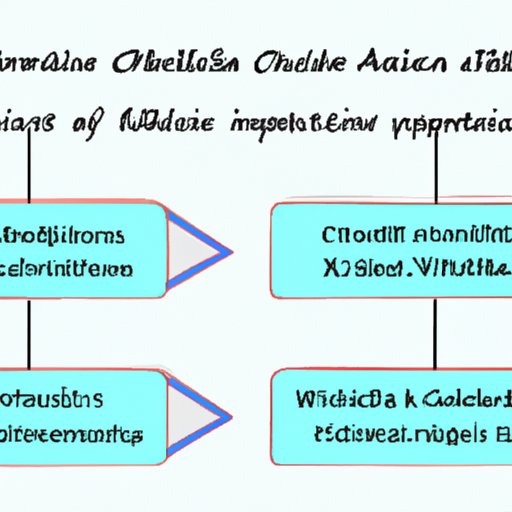
I. Introduction
When writing academic papers or conducting research, it’s crucial to properly cite sources to avoid plagiarism and give credit where it’s due. However, citing sources can be challenging, especially when it comes to online sources like Wikipedia. With its easily accessible and abundant information, Wikipedia has become a popular source for research. However, the credibility of Wikipedia and the proper way to cite it are still contentious issues among scholars. In this article, we’ll provide solutions to the common challenges of citing Wikipedia and give you a comprehensive guide on how to cite it properly.
II. The Importance of Properly Citing Sources
Properly citing sources is a key aspect of academic writing. It not only gives credit to the authors of the sources you use but also helps you avoid accusations of plagiarism. Moreover, citing sources creates a chain of credibility in academic research that assures readers of the reliability of the information presented.
Plagiarism, the act of using someone else’s work without giving credit, can result in serious consequences such as academic probation, suspension, or even expulsion. In addition, plagiarism can harm your reputation as a writer and damage your career prospects. Thus, properly citing sources is essential to maintaining academic integrity and credibility.
III. The Common Misconceptions about Citing Wikipedia
Wikipedia has been widely criticized by scholars for its authority as a source. One of the main misconceptions about citing Wikipedia is that it’s not a reliable or credible source due to its user-generated content. However, this is not entirely true, as Wikipedia articles usually undergo a process of editing and fact-checking by a community of volunteers.
Another common misconception is that citing primary sources is preferable to citing secondary sources like Wikipedia. While this might be true in some cases, citing primary sources such as interviews or original research articles can be difficult and time-consuming. In contrast, Wikipedia can provide a concise and accessible summary of the information.
Despite these misconceptions, Wikipedia can still be an excellent source for research, provided it’s cited properly.
IV. Step-by-Step Instructions for Citing Wikipedia Using Various Citation Styles
There are different citation styles used in academic writing, such as APA, MLA, and Chicago. Each citation style has specific rules for citing sources. Here’s a step-by-step guide on how to cite Wikipedia using the most common citation styles:
1. APA Style
In APA style, Wikipedia is treated as an online reference work. Here’s how to cite it:
Author, A.A. (Year, Month Day). Title of article. In Wikipedia. Retrieved Month Day, Year, from https://www.wikipedia.org/
For example, a citation for the Wikipedia page on the history of psychology would look like this:
Smith, J. (2021, June 15). History of psychology. In Wikipedia. Retrieved August 20, 2021, from https://www.wikipedia.org/
2. MLA Style
Wikipedia is cited in MLA style as an online source. Here’s the format:
“Title of Article.” Wikipedia, Wikimedia Foundation, Day Month Year published, Time published, URL.
As an example, a citation for the Wikipedia page on the history of psychology in MLA style would look like this:
“History of Psychology.” Wikipedia, Wikimedia Foundation, 15 June 2021, 8:45 pm, https://en.wikipedia.org/wiki/History_of_psychology.
3. Chicago Style
In Chicago style, Wikipedia is cited as an online encyclopedia entry. Here’s the format:
“Article Title.” Wikipedia. Wikimedia Foundation, Date of publication. URL.
For example, a citation for the Wikipedia page on the history of psychology in Chicago style would look like:
“History of Psychology.” Wikipedia. Wikimedia Foundation, June 15, 2021. https://en.wikipedia.org/wiki/History_of_psychology.
V. Tips for Evaluating the Credibility and Accuracy of Wikipedia Articles
Not all Wikipedia articles are created equal. Some might contain inaccurate or biased information. Therefore, it’s essential to assess the credibility and accuracy of a Wikipedia article before using it as a source. Here are some tips:
- Check the sources cited within the article for reliability and accuracy.
- Examine the edit history of the article to see if it has undergone significant changes.
- Consider the expertise and credentials of the article’s author.
- Check the talk page of the article to see if any issues or controversies have been raised.
VI. The Limitations of Citing Wikipedia and Relying Solely on it
Although Wikipedia can be a useful source of information, it has its limitations. As previously mentioned, Wikipedia is a user-generated platform where the information presented hasn’t been vetted by professionals. This can result in inaccuracies and biases in some articles. Therefore, it’s best to use Wikipedia as a starting point for research rather than relying solely on it.
VII. Examples of How to Properly Cite Different Sections of a Wikipedia Page
Wikipedia pages can contain different sections, such as images, infographics, or tables. Here’s how to properly cite them:
1. The Wikipedia Article Itself
To cite the article itself in APA style, follow this format:
Author. (Year, Month Day). Title of article. In Wikipedia. Retrieved from URL
2. Infographics or Images in Wikipedia
To cite an infographic or image from Wikipedia in APA style, use this format:
Author. (Year). Title of image or infographic [Description of form]. In Wikipedia. Retrieved from URL
3. Tables in Wikipedia
To cite a table from Wikipedia in APA style:
Author. (Year). Title of table [Table]. In Wikipedia. Retrieved from URL
VIII. Conclusion
Properly citing sources, including Wikipedia, is crucial for academic writing. We’ve discussed the common misconceptions about citing Wikipedia and how to use it effectively in research. In addition, we’ve provided step-by-step instructions on how to cite Wikipedia in APA, MLA, and Chicago styles, as well as tips for evaluating the credibility and accuracy of Wikipedia articles. Remember, while Wikipedia can be a useful source of information, it has its limitations, and it’s best to use it as a starting point for research and not rely solely on it. By following the guidelines provided, you can cite Wikipedia properly and avoid plagiarism in your academic writing.





